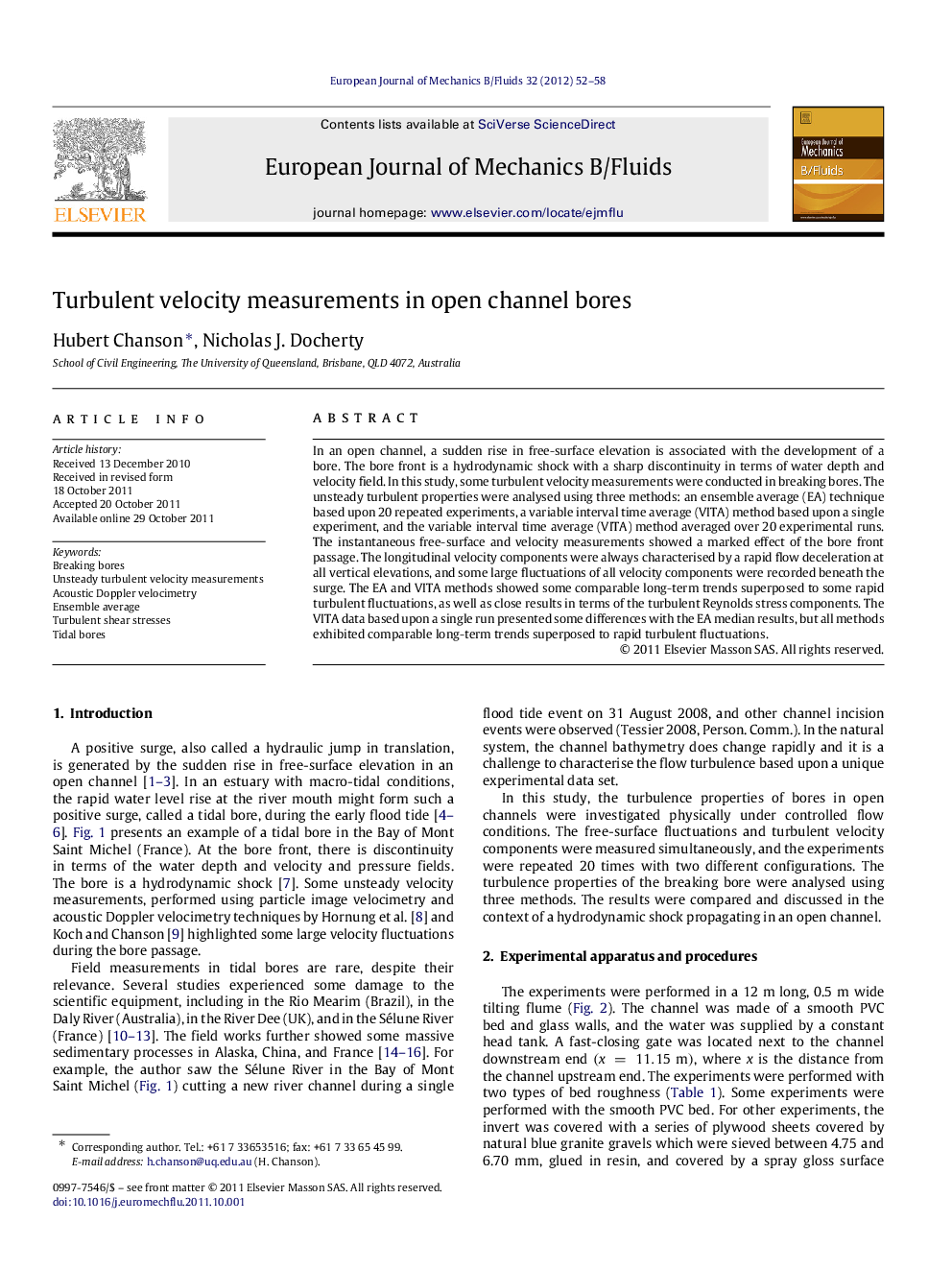| Article ID | Journal | Published Year | Pages | File Type |
|---|---|---|---|---|
| 650540 | European Journal of Mechanics - B/Fluids | 2012 | 7 Pages |
In an open channel, a sudden rise in free-surface elevation is associated with the development of a bore. The bore front is a hydrodynamic shock with a sharp discontinuity in terms of water depth and velocity field. In this study, some turbulent velocity measurements were conducted in breaking bores. The unsteady turbulent properties were analysed using three methods: an ensemble average (EA) technique based upon 20 repeated experiments, a variable interval time average (VITA) method based upon a single experiment, and the variable interval time average (VITA) method averaged over 20 experimental runs. The instantaneous free-surface and velocity measurements showed a marked effect of the bore front passage. The longitudinal velocity components were always characterised by a rapid flow deceleration at all vertical elevations, and some large fluctuations of all velocity components were recorded beneath the surge. The EA and VITA methods showed some comparable long-term trends superposed to some rapid turbulent fluctuations, as well as close results in terms of the turbulent Reynolds stress components. The VITA data based upon a single run presented some differences with the EA median results, but all methods exhibited comparable long-term trends superposed to rapid turbulent fluctuations.
► Unsteady turbulence in open channel bores was investigated physically. ► Three processing techniques were tested and compared. ► The ensemble average of 20 runs and median of 20 variable interval time averages show comparable long-term trends. ► Variable interval time average data based upon a single run presented some differences. ► The turbulent stress data showed large and rapid fluctuations of all components.
